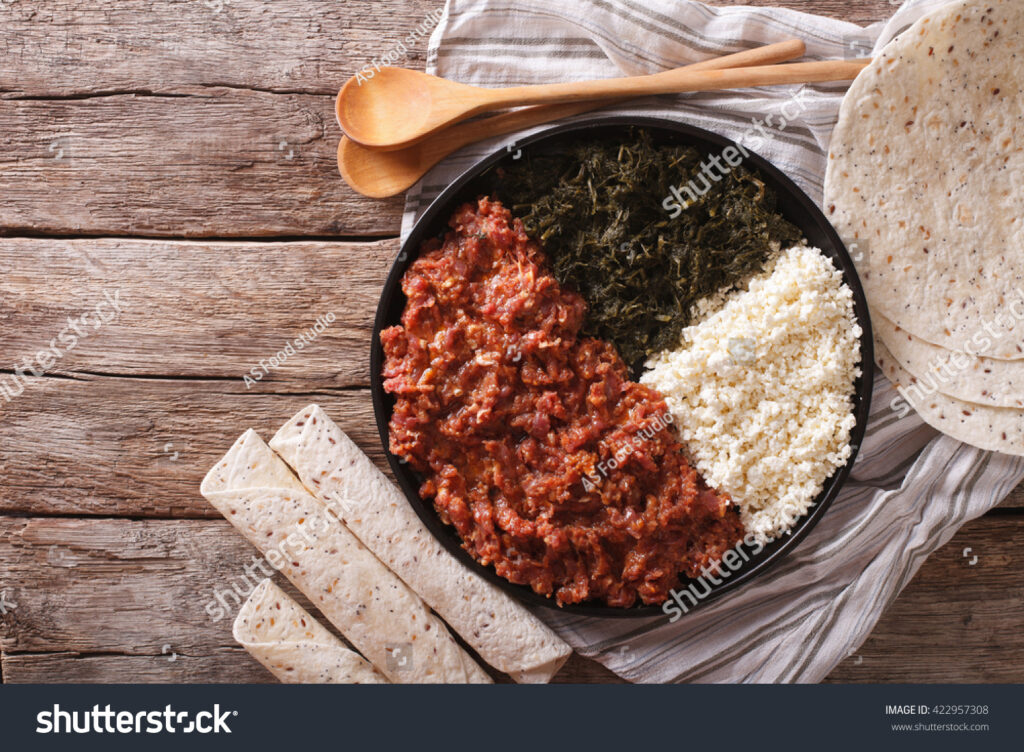A guide to Ethiopian cuisine
A guide to Ethiopian cuisine
The air inside the Addis Ababa restaurant is thick with the scent of berbere, the deep red spice blend that finds its way into many dishes of Ethiopian cuisine. Platters arrive, steaming and fragrant, piled high with richly seasoned meats, lentils, and vegetables. There is no cutlery—only injera, the spongy sourdough flatbread that doubles as a utensil. It is a meal meant to be shared, a communal experience that speaks to the heart of Ethiopian hospitality.
At the center of the spread, Tibs demands attention. Thinly sliced beef, seared in a fiery pan with onions, garlic, and green chilies, glistens under the soft light. It crackles as it lands on the platter, tossed with niter kibbeh, the spiced clarified butter that lends depth to so many Ethiopian dishes.

The heat of the peppers is sharp but tamed by the slow-cooked sweetness of caramelized onions, while the berbere, with its notes of dried chili, fenugreek, and cardamom, lingers on the tongue. This is not food for the timid—it is bold, unapologetic, and full of history.
Dining in Ethiopia is a ritual, a rhythmic exchange between hands and injera, between the sharp tang of fermented teff and the layered spices of wats and stews. Meals stretch long into the evening, punctuated by the slow ceremony of coffee, roasted over an open flame, ground by hand, and brewed in a jebena, a traditional clay pot. There is something reverent about the process, the patience it requires. The thick, black coffee is served in small cups, its bitterness softened by the unmistakable scent of burning frankincense, which curls through the air like an incantation. Here, food is not rushed; it is savored, absorbed, and understood.
Then there is kitfo, the popular dish of the Gurage people, a favorite for meat lovers. Lean beef, minced to a smooth consistency, is seasoned with mitmita, a potent blend of chili powder, cardamom, and cloves.

The meat is often served raw, like an Ethiopian take on tartare, its richness amplified by a generous dose of niter kibbeh. Alongside it, there is ayibe, a fresh, mild cheese that soothes the intensity of the spices, offering a cool contrast to the heat of the mitmita. The interplay of textures—the tender softness of the kitfo, the gentle crumble of the cheese—feels almost indulgent.
Ethiopian cuisine is a testament to the country’s cultural and geographical diversity, its flavors shaped by ancient trade routes, Orthodox fasting traditions, and indigenous culinary wisdom. It is a cuisine that respects time—time to cook, to share, to linger. To eat Ethiopian food is to engage with the past, to encounter the remnants of emperors and spice caravans, to witness the enduring power of communal dining. In a world that often moves too fast, Ethiopia offers a lesson: slow down, share a meal, and let the food tell its story.